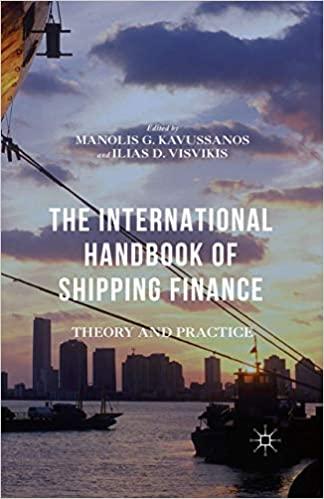Question
6. Aspen Resources Limited is a U.S. energy company with operations in oil and gas exploration and development (E&P) and refining and marketing (R&M). It
6. Aspen Resources Limited is a U.S. energy company with operations in oil and gas exploration and development (E&P) and refining and marketing (R&M). It seeks an estimate of weighted average cost of capital.
The following assumptions will be made:
The marginal tax rate (Tc ) is 40%.
The market risk premium is 5%.
Two approaches will be used to estimate the weighted average cost of capital:
Prevailing consolidated.
Target consolidated.
The target consolidated debt-to-value ratio, set in consultation among division and corporate executives and the board, is 32.2% (this is the proportion of net debt to enterprise value). Use net debt in your calculations (instead of total debt) consistently throughout the entire problem!
The prevailing consolidated debt-to-value ratio is arrived at using the following data:
Current stock price: $44.11
Shares outstanding (millions): 2,950.6
Exercisable options (millions): 396.5
Weighted average strike price: $34.12
Total debt ($million) $101,845
Cash and equivalents ($million): $22,337
Enterprise value ($million): $213,620 5
(a) [1] Demonstrate how the enterprise value is derived.
Hints:
Enterprise value = market-value equity + market-value employee stock options + net debt
Estimate the value of the exercisable stock options by multiplying the number outstanding by the difference between the current stock price and the weighted average strike price. Note: This is an approximation of the Black-Scholes formula.
Employee stock options holders are equity stakeholders.
(b) [1] What potential error exists in our estimate of net debt?
(c) [3] What is the prevailing consolidated debt-to-value ratio? How does it compare to the target consolidated debt-to-value ratio? Give one possible explanation for the difference.
(d) [4] Derive two estimates of r E , one based on the target consolidated debt-to-value ratio and one based on the prevailing consolidated debt-to-value ratio. Use the CAPM. Let rf = 2.8%, the 30-year U.S. Treasury bond yield. E = 1.25 is given.
Note: E = 1.25 is based on the prevailing consolidated debt-to-value ratio. To determine an appropriate estimate of equity beta based on the target capital structure, unlever E = 1.25 and then relever.
Use the formulas given in the Cost of Capital note:
U = E / (1 + (1 TC ) (D / E))
E = (1 + (1 TC ) (D / E)) U
(e) [1] To estimate r D , use the Treasury spread approach, that is, assume that Aspens spread over 30-year Treasuries is 1.62%. In other words, let r D equal the current 30-year U.S. Treasury bond yield, 2.8%, plus the assumed spread. What is your estimate of r D ?
(f) [3] Lastly, derive two estimates of r WACC, one based on the target consolidated debt-to- value ratio and one based on the prevailing consolidated debt-to-value ratio. Provide one explanation for the difference between these two rates.
Step by Step Solution
There are 3 Steps involved in it
Step: 1

Get Instant Access to Expert-Tailored Solutions
See step-by-step solutions with expert insights and AI powered tools for academic success
Step: 2

Step: 3

Ace Your Homework with AI
Get the answers you need in no time with our AI-driven, step-by-step assistance
Get Started


